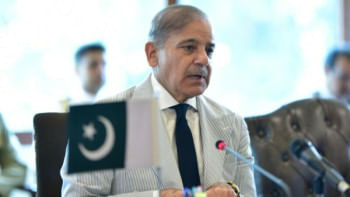Salahuddin's Case Chronology
Freedom fighters attacked him during the Liberation War in 1971, leaving him seriously injured, but he survived.
After the war, he was implicated in at least six cases for his crimes against humanity. Again he was lucky as he successfully escaped justice taking advantage of the political changeover in August 1975.
Since then he did not have to look back and rose to fame politically as he was elected lawmaker six times in a country, whose birth he had vehemently opposed. He even became a minister.
Justice eventually put its clutch on Salauddin Quader Chowdhury in October 2013 when a special tribunal handed down death penalty on him for his war crimes.
The Supreme Court yesterday upheld his death penalty.
As the war broke out, Salauddin and his father Fazlul Quader Chowdhury, chief of anti-liberation Muslim League, joined hands with the Pakistan army and unleashed a reign of terror in Chittagong.
Aggrieved by their atrocities, freedom fighters planned to kill them along with 20 other Pakistan army collaborators. As per the plan, a four-member team of freedom fighters attacked Salauddin's car on September 20, 1971, witnesses said.
The driver of the vehicle was killed in the attack, but Salauddin survived with injuries and fled to Pakistan, they added.
After the war, at least six cases were filed against Salauddin for his involvement in murders, arsons, lootings, robberies and atrocities, but no legal headway was seen after 1975.
One of the six cases, all filed with Raozan police, was in connection with the killing of Natun Chandra Sinha. Salauddin was the second prime accused in the case filed on January 29, 1972, according to the prosecution.
On March 3, 1972, Mossaber Ahmed Chowdhury, a leader of Gohira union unit Awami League, filed another case under the Bangladesh Collaborators Order, 1972, for the atrocities and killings of unarmed people. In the charge sheet, Salauddin was shown as a fugitive.
The other four cases were filed against the war crimes convict between March and April in 1972 in connection with murders, confinements, arsons and lootings.
Salauddin escaped to Pakistan during the war and returned to Bangladesh in 1974.
After the murder of Bangabandhu Sheikh Mujibur Rahman, collaborators of the Pakistan army facing trials were freed, when the martial law government led by president ASM Sayem, which was dominated by Gen Ziaur Rahman, repealed the Collaborators Act on December 31, 1975.
According to the prosecution, Natun Chandra killing case did not make any progress after 1974. The other cases were closed upon orders from the then sub-divisional officer (north) of Chittagong on different occasions in 1976.
Soon after independence, Fazlul Quader was caught by freedom fighters and the allied force during his attempt to escape to Myanmar with 60 kilograms of gold and Tk 7 lakh in cash.
He died in jail in 1974.
Salauddin became active in politics in 1978. Everything was going on in his favour until the ruling Awami League decided to try the war criminals and formed two tribunals to that end.
On December 16, 2010, law enforcers arrested Salauddin at Banani in the capital in connection with torching a car at Moghbazar on June 26 the same year. He was shown arrested in a war crimes case on December 19 that year.
The investigation officer of the international crimes tribunals started enquiry into the allegations against Salauddin on July 26, 2010, and completed its probe on October 2, 2011, finding evidence of his involvement in 32 offences.
On November 14, 2011, the prosecution pressed charges against Salauddin and the International Crimes Tribunal-1 indicted him on 23 charges on April 4, 2012.
During the 29-month-long proceedings including the pre-trial stage, Salauddin "directed several courtroom dramas".
He cancelled vokalatnama of his counsels twice and reappointed the same counsels thrice. Against the backdrop of his moves, the tribunal kept a state-appointed defence counsel until the end of the hearing.
Sometimes Salauddin locked into arguments even with the judges for which he was cautioned several times.
The prosecution examined 40 witnesses including victims, eyewitnesses and hearsay witnesses to prove the charges in 12 months since May 14, 2012. Later the investigation officer gave deposition and was cross-examined by the defence.
Four defence witnesses including the convict himself gave deposition before the tribunal through which the defence tried to establish that Salauddin was not in Bangladesh from April 1971 to April 1974.
On October 1, 2013, the tribunal sentenced him to death in four charges, 20 years jail in three other charges and five years jail in two and acquitted him from 14 other charges.
Salauddin filed an appeal with the Supreme Court on October 29, 2013, and after hearing the appeal for 13 days, the apex court on July 7 fixed yesterday for delivering its judgment.

 For all latest news, follow The Daily Star's Google News channel.
For all latest news, follow The Daily Star's Google News channel. 



Comments